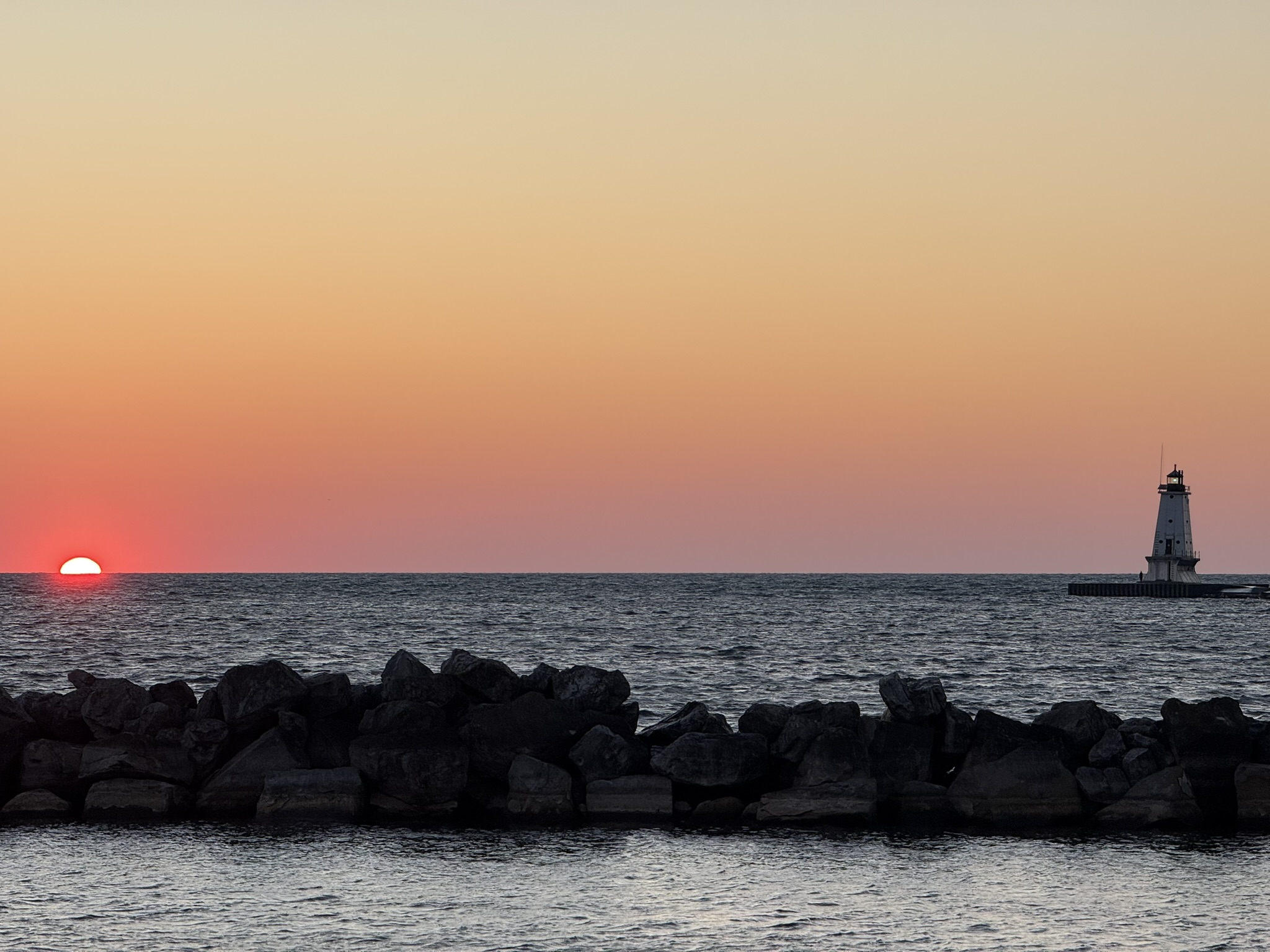I read recently, and regret to say I can’t remember where, something akin to the following:
Not long after the Civil War the country turned its attention from hunting and killing each other back to hunting and killing Indians. In pursuit of a tribe on the western frontier, a group of American soldiers traveled west from North Carolina into Kentucky. Along their way, the men camped at night and grew large fires well beyond the need to stay warm. They felled century-old trees, slaughtered more buffalo, and left more debris and damage to the land than they needed. Even at the time, they knew they did not need as much as they were consuming. The men lit numerous, huge bonfires in excess of their needs not because it was unusually cold, but because they believed the land so abundant they could not possibly have an impact. In that great American tradition, “Why not? And why shouldn’t I?”
The Indians believed this was wasteful and harmful to the land. They traveled over the same footpaths as the buffalo, picked only the fruit and berries they intended to eat, and used every bit of any animal they slaughtered. Unlike the white soldiers marching toward them who traversed the land with abandon, the Indians knew the land could support them only if they, in turn, supported it.
When it comes to land management, there are seven basic rules that govern our relationship beyond the scope of mere nature or human preference:
- Land must be cared for, because land that is used will be depleted if not properly cared for.
- To care for land, we must know the land, be able to afford its care, and be motivated to care for it.
- People will not care for land merely because they or someone else think they should based solely on economic principles.
- People care for a place and the land when their interest is direct, dependable, and permanent.
- In order for people to have a direct, dependable, and permanent interest in the land, they must expect to live there for as long as they live and, even more so, if they expect their children and grandchildren to inhabit a place.
- Ownership is an incentive to care, but an increase in the quantity of land owned or managed decreases the quality of that land.
- A place is doomed to failure and destruction if it does not foster a sense of pride, thrift, desire, skill, and means to care for places properly.
Conservationists, of which I consider myself an old-fashioned adherent in the fashion of Theodore Roosevelt and John Muir, have long focused on large-scale projects of vast wilderness. Their work is nothing short of impressive and their successes, such as the preservation of the Grand Canyon, the Everglades, and other jewels of the American National Park system have, perversely, turned many everyday Americans into viewing wilderness as a theme park. A place you go to merely drive through, observe briefly through the lens of an iPhone camera, and then retreat back to the synthetic comforts of a Cold Stone Creamery and Starbucks.
The best I can tell, there are three primary forms of conservation happening today, two of which are in addition to the theme parks:
- Thematic conservation, like the preservation of large swaths of wilderness as I just mentioned.
- Industrial conservation, where soil, trees, and other natural resources are consumed and replaced with lesser value. Such as soil heavily treated with industrial fertilizers or vast forests replaced with a monoculture of neatly arranged trees designed to grow fast for quick cutting for, say, paper or oils. I’d add “remediation” into this, where an oil spill in the ocean or a mine collapse off a mountain is “remedied” through some kind of emergency response.
- Resource conservation, where more limited sources such as fresh water, oil, or ore are rationed or curtailed for future use. We see this with the desire to replace coal with wind, or oil with solar-generated electricity.
All of these are inadequate, disjointed, and likely to fail entirely or succeed only in part.
I am no Theodore Roosevelt or John Muir. My kind of conservation happens at a much more local, everyday level. Conservation to me means understanding:
- Humans crave and need wilderness, something lush and full of nature. The benefits of which include reduced stress, fresher air, cleaner water, and respect for beauty, time, and place.
- Our built environments and cities should embrace nature, not fight against it at every turn.
- Humans should embrace seasonality for our mental health. We should not try to flee from winter by congregating in a desert half the year.
- Any system that reduces the use of a harmful industry is worth the cost, because the failure to respect the limits of land is a much higher, long-term cost. This is why buses are superior to cars, and bicycles are superior to buses. But land use must support this.
I have written my lament of the loss of trees in my neighborhood on the east side of Indianapolis. This destruction continues. I can now no longer walk more than a few blocks in any direction from my house without witnessing this damage. “How has this happened?” I wonder.
And the reason is we operate on too simple a standard.
The standard is trees are mere decoration. If one becomes diseased, perhaps removing it will help. But in other circumstances, if a tree is merely in the way of something else or perceived as a minor nuisance, no big deal to saw it off.
Now there is damage to my place.
Ellenberger Park, a place that is increasingly just grass (and, if the City of Indianapolis has its way, not even real grass!), has lost more trees at the hands of industrial machines and saws. The earth itself is gnarled by ugly stumps we will never do anything with and the tracks of heavy machinery that has warped the ground into mechanized ruts unsuitable even for walking on.
My neighborhood has more trees marked for removal because, one assumes, some of them are under power lines. These trees were planted by someone ten or more years ago (likely with the blessing of a city administrator), and now they, too, are marked for death. This, to me, is no different than if I sawed off a man’s legs at the ankles and left his bloody foot stumps to stay there as a marker of my indifference to his life and use. “He got in my way,” is not a defense.
This damage is carried out before my eyes and against my intention by people who bid the lowest and get paid by the tree. They almost certainly do not live here and yet, they have made a lasting flaw in the face of me and the earth, for no future value or lasting good. The City of Indianapolis and its utility companies move through in violation of several of the 7 rules of conservation:
- The people doing the work do not know the land or place.
- The people who live here were not aware or incentivized to even know or understand what was being done.
- Many people do not care for the place anyway, because they do not expect to live here forever.
- The ownership of the land is seemingly not shared or direct.
- The place does not foster the sort of understanding of the needs of people and land.
Until these stumps are removed and the causes of their death are remedied, healing this place and restoring shade, grip, and beauty, there will be something impaired in my mind. I used to be able to walk long stretches under complete canopies of leaves so dense they blocked the harshest sun and even some light rain. Now my place is increasingly broken sidewalks, distracted drivers operating lethal machines against my body and my dog, and sheer ugliness of the harshest kind. Instead of reducing stress, walking now increases it. I do not feel part of a place. Just another strip of urban decay.
If this is to be the result every time, the City should immediately surrender the right-of-way to garbage and parking city-wide, and never plant or allow the planting of another tree. Because if they are only allowed to stand for 10 years before they come “too close” to a power line or utility, just what, exactly, are we trying to conserve?
My peace is sawed, damaged, and rutted. I will not be able to forget it, either, because, in violation of another rule, the “cost” of removing the stumps is deemed unnecessary, prohibiting the restoration of new life. Like an abandoned gas station or a Kroger left for a shinier, new thing across the street, “Why not? Why shouldn’t we?”
Others will walk among these ruins, likely a generation from now, and the damage will still be there, a reminder of a place that was once visibly more preserved and natural. Others will not care at all, because they will have retreated to their synthetic, vinyl neighborhoods where such natural wonder was long since removed and never restored. They will never know what was lost short of driving to a natural theme park. All of this is inadequate, a failure of humanity, and part of the long tradition of American settlers who could never begin to understand the limits of the land. So it seems we have yet to try to even begin to understand.


